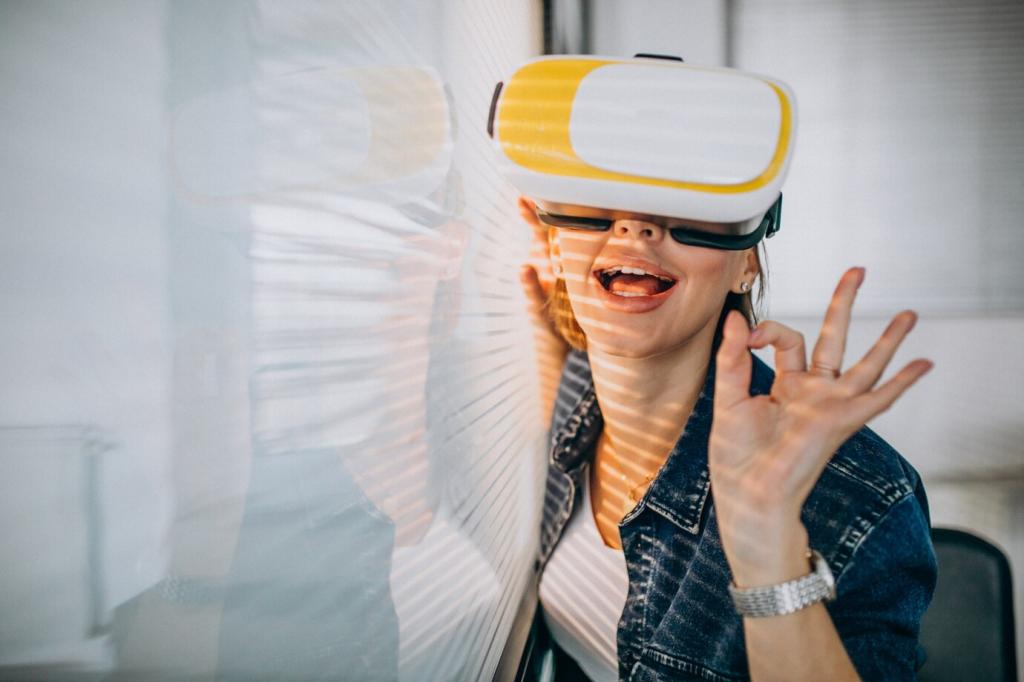Chosen theme: Future of Transportation: Autonomous Vehicles. Step into a world where self-driving cars, shuttles, and trucks collaborate with smart streets to move people safely, cleanly, and affordably. Join our community to explore breakthroughs, real stories, and practical tips for your first autonomous ride.
Under the Hood: How Autonomous Vehicles Perceive, Decide, and Drive
Sensing the World in 360 Degrees
Lidar sketches depth, radar tracks motion through rain, cameras read signs and subtle cues, and ultrasonic sensors mind the close details. High-definition maps and occasional vehicle-to-everything messages add context. Together, these layers create resilient awareness, crucial when glare, snow, or unexpected debris challenge clear vision at the worst possible time.
From Raw Data to Confident Decisions
Perception identifies lanes, cyclists, pets, and cones; localization finds the car’s exact place; prediction anticipates who moves next; and planning chooses a smooth, courteous path. Deep learning mixes with probabilistic models to keep uncertainty honest. Safety margins, human-like signaling, and patient merges make rides feel natural rather than robotic.
Fail-Safe by Design
Redundant compute, power, braking, and steering ensure hiccups do not become hazards. Real-time monitors check system health, while strict operational domains limit where and when vehicles drive. If something seems off, the car seeks a minimal-risk stop. Independent standards like ISO 26262 and UL 4600 guide rigorous safety cases and audits.
City Life Reimagined with Self-Driving Mobility
Fleet vehicles move instead of parking for hours, allowing cities to reclaim asphalt for trees, café seating, protected bike lanes, and wider sidewalks. During a Saturday market pilot, vendors noticed fewer mid-block U-turns and calmer traffic. Share your block’s dream makeover and we’ll gather design ideas from our readers.


City Life Reimagined with Self-Driving Mobility
Autonomous shuttles shine on first and last miles, reliably bridging homes, stations, and offices. Integrated apps plan trips across modes, timing pickups to train arrivals and accessible boarding. With coordinated schedules and transparent wait times, transfers feel predictable rather than rushed. Would you try an all-in-one mobility pass for your commute?


Safety, Trust, and the Rules of the Road
Human error drives most crashes today; autonomous systems aim to reduce distractions, speeding, and risky merges. Comparing safety requires context: road type, weather, time of day, and operational domain matter. Public miles, disengagement narratives, and safety reports help everyone track progress. Which metrics would make you feel genuinely reassured?
Safety, Trust, and the Rules of the Road
Unusual situations—fire trucks weaving, hand signals from a worker, a stray mattress—are rehearsed in huge simulations and shadow mode. Vehicles learn from rare events gathered across fleets, turning surprises into standard playbooks. Overnight updates bring improvements without trips to the shop, quietly teaching cars better manners and sharper judgment.
Energy, Emissions, and the Planet
Software can match a compact vehicle to solo riders and dispatch a larger shuttle only when demand peaks, avoiding unnecessary mass in motion. Pooling compatible trips limits empty miles without painful detours. Over time, these small optimizations stack into significant energy savings and noticeably quieter, less congested streets.
Economics, Jobs, and New Services
Instead of owning a car that sits idle most of the day, riders summon trips as needed, choosing quiet, comfortable rides without maintenance chores. Predictable availability and transparent wait times matter more than horsepower. Tell us when on-demand mobility would replace a personal trip—errands, airport runs, or late-night returns.
Economics, Jobs, and New Services
Safety drivers evolve into fleet supervisors; remote assistance coaches vehicles through tricky scenarios; technicians maintain sensors; and operations teams coordinate charging, cleaning, and dispatch. Training programs increasingly blend software literacy with hands-on skills. If you’re mid-career, which reskilling path—operations, data, or maintenance—seems most exciting for you?
Your First Autonomous Ride: A Friendly Guide
Use the app to pick an exact curb point, confirmed by a clearly marked pin and color-coded lights on the vehicle. Real-time messages explain delays or alternative spots. Voice and screen controls allow seatbelt reminders, temperature adjustments, and stop requests. Would a hands-free “assist me” button help your family most?


Your First Autonomous Ride: A Friendly Guide
A route display shows where the car is looking and why it slowed, turning mystery into confidence. Smooth braking, wide door openings, and grippy floors help everyone board safely. Bring headphones—the cabin is surprisingly quiet. If you notice anything odd, tap “report” and the system logs context for review.
